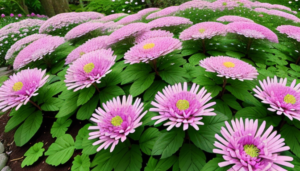Planting wild rice can be a rewarding experience for beginners looking to delve into the world of cultivating this traditional and nutritious grain. From understanding the origins and cultural significance of wild rice to harvesting and enjoying the fruits of your labor, this beginner’s guide covers all the essential steps and tips for successful cultivation.
When embarking on the journey of planting wild rice, it is crucial to first grasp the basics. Wild rice, known for its nutty flavor and nutritional benefits, has been a staple food in various indigenous communities for centuries. By exploring its rich history and significance, you can develop a deeper appreciation for this unique grain.

One of the key factors in successfully growing wild rice is choosing the right location. Ideal conditions such as water depth, temperature, and soil type play a significant role in the cultivation process. Ensuring that these environmental factors align with the requirements of wild rice is essential for a bountiful harvest.
Preparing the planting site is another crucial step in the cultivation process. Clearing vegetation, leveling the ground, and maintaining proper water flow are necessary to create a conducive environment for the growth of wild rice. By following these steps diligently, you set the stage for a successful harvest.
Sowing wild rice seeds requires precision and care to ensure optimal growth and yield. Understanding the timing, spacing, and techniques involved in the sowing process is essential for nurturing healthy crops. By mastering these techniques, you can set yourself up for a flourishing wild rice harvest.
Maintaining the crop involves diligent care and attention to detail. Implementing weed control measures, managing water levels effectively, and monitoring for pests and diseases are crucial aspects of crop maintenance. By staying proactive and vigilant, you can safeguard your wild rice crop against potential threats.
Harvesting and processing wild rice mark the culmination of your hard work and dedication. Recognizing the signs of readiness for harvest, exploring different harvesting methods, and learning about traditional and modern processing techniques are essential for bringing your harvest to fruition.
Finally, enjoying the fruits of your labor involves celebrating the harvest and exploring the culinary delights of wild rice. From delicious recipes to cultural traditions associated with this ancient grain, there is much to savor and appreciate. Embrace the journey of planting wild rice and immerse yourself in its rich heritage.

Understanding Wild Rice
Wild rice, often referred to as the “caviar of grains,” holds a rich history and a plethora of nutritional benefits. Originating from various indigenous communities, wild rice has been a staple food for centuries, cherished for its unique flavor and health properties. This grain is not only a source of sustenance but also a symbol of cultural heritage and tradition, deeply rooted in the customs of many societies.
When it comes to nutritional value, wild rice is a powerhouse of essential nutrients, including protein, fiber, antioxidants, and various vitamins and minerals. Its distinct nutty flavor and chewy texture make it a versatile ingredient in a wide range of dishes, from salads to soups and pilafs. Incorporating wild rice into your diet can not only add a delicious twist to your meals but also boost your overall health and well-being.
To truly appreciate the significance of wild rice, one must understand the labor-intensive process of harvesting this grain. Unlike cultivated rice varieties, wild rice grows in shallow waters, requiring careful cultivation and harvesting techniques. The intricate relationship between wild rice and its natural habitat highlights the importance of sustainable farming practices and environmental conservation.

Choosing the Right Location
When it comes to choosing the right location for planting wild rice, there are several key factors to consider. Water depth is crucial, as wild rice thrives in shallow water. The ideal depth is typically around 12-18 inches. Additionally, temperature plays a significant role in the growth of wild rice, with warmer water temperatures promoting better yields.
Another essential consideration is the soil type. Wild rice prefers mucky or sandy soil that is rich in organic matter. It’s important to ensure that the soil is well-drained to prevent waterlogging, which can hinder the growth of the plants. Moreover, the availability of sunlight is vital for the photosynthesis process, so selecting a location with ample sunlight is key.
Creating a list of criteria based on these factors can help you narrow down the perfect spot for your wild rice cultivation. Remember, the right location can make a significant difference in the success of your crop, so take the time to evaluate and choose wisely.
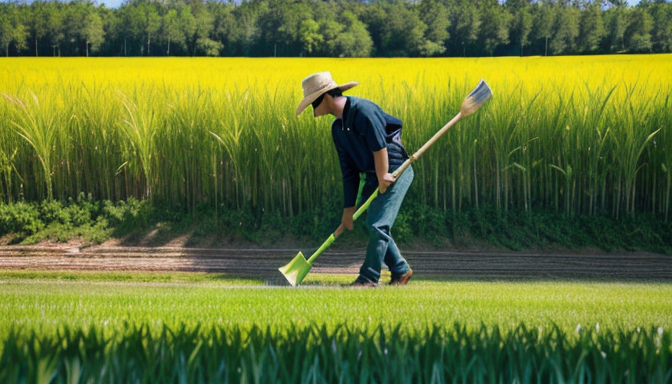
Preparing the Planting Site
When it comes to for wild rice cultivation, attention to detail is key to ensuring a successful harvest. Before you begin sowing your wild rice seeds, it’s crucial to set the stage for optimal growth and development. Here are the essential steps to prepare the planting site:
- Clearing Vegetation: Remove any existing vegetation or weeds from the planting area to prevent competition for resources.
- Leveling the Ground: Ensure that the ground is flat and even to facilitate uniform water distribution and prevent waterlogging.
- Ensuring Proper Water Flow: Check the drainage in the area to prevent water stagnation, which can lead to rot and disease in the wild rice crop.
By meticulously with these steps, you are setting the foundation for a thriving wild rice crop that will reward you with a bountiful harvest. Remember, a well-prepared site is the first step towards a successful cultivation journey.
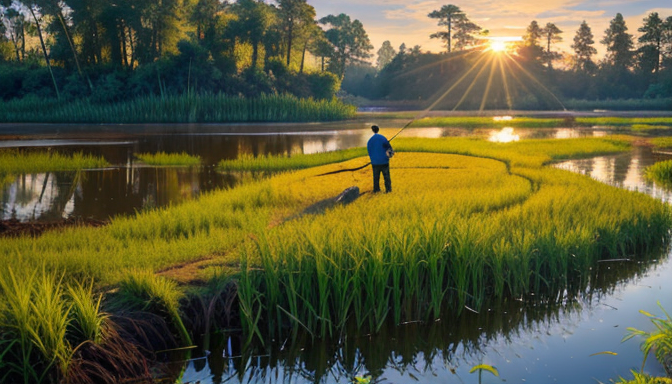
Sowing Wild Rice Seeds
When it comes to sowing wild rice seeds, precision and care are key to ensuring a successful harvest. Before diving into the planting process, it’s essential to understand the specific requirements of wild rice seeds. These seeds are unique in their preferences for growing conditions and need to be handled with attention to detail. Here are some important steps to consider when sowing wild rice seeds:
- Timing: Wild rice seeds should be sown in the spring when temperatures are consistently warm to promote germination and growth.
- Spacing: Proper spacing between seeds is crucial for allowing each plant to receive adequate sunlight and nutrients. Aim for a spacing of about 6 inches between seeds.
- Depth: Wild rice seeds should be sown at a depth of about 1/2 inch in the soil. Avoid planting them too deep or too shallow, as this can affect their ability to sprout.
- Techniques: Consider different sowing techniques such as broadcasting seeds over the water or using a seed drill for more precise planting in flooded fields.
By following these guidelines and paying attention to the specific needs of wild rice seeds, you can set the stage for a bountiful harvest of this nutritious and culturally significant grain.
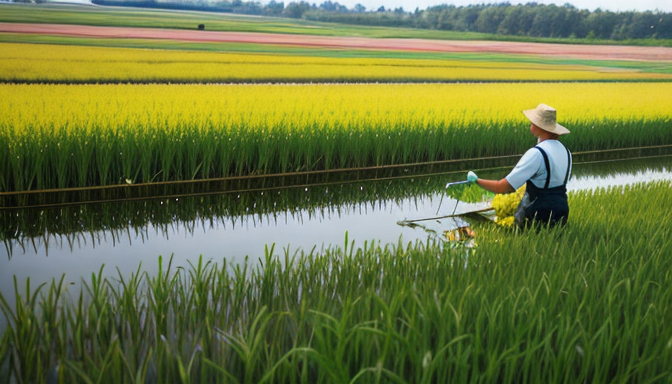
Maintaining the Crop
When it comes to of wild rice, there are several key factors to consider to ensure a successful harvest. Let’s delve into the essential tips and practices that will help you nurture a healthy and thriving wild rice crop:
- Weed Control: Regularly check your wild rice paddies for any unwanted weeds that may compete with your crop for nutrients and space. Implement effective weed control measures to keep your wild rice plants healthy and thriving.
- Water Management: Maintaining the proper water levels in your wild rice fields is crucial for optimal growth. Ensure that the water depth is consistent and that your crop is not submerged or left dry to prevent stunted growth.
- Pest and Disease Monitoring: Keep a close eye on your wild rice plants for any signs of pests or diseases. Implement preventive measures and timely treatments to protect your crop from potential damage.
By following these guidelines for maintaining the crop, you can increase the chances of a bountiful wild rice harvest and enjoy the rewards of your hard work and dedication in cultivating this traditional and nutritious grain.

Harvesting and Processing
When it comes to harvesting and processing wild rice, it’s essential to be attentive and meticulous to ensure a successful outcome. Harvesting wild rice is a labor-intensive process that requires careful timing and precision. Here are some key steps to consider:
- Signs of Readiness: Before harvesting, look for signs that the wild rice is ready, such as the grains turning from green to a golden hue and the majority of grains being mature.
- Harvesting Methods: There are various methods for harvesting wild rice, including hand-harvesting with a canoe or using specialized equipment like a traditional knockers or modern combines.
- Processing Techniques: Once harvested, the wild rice needs to be processed to remove the outer husk. Traditional methods involve parching the rice over a fire and then threshing it to separate the grains.
- Modern Processing: Nowadays, modern processing techniques involve using machinery to hull the rice, ensuring a more efficient and consistent process.
By understanding the harvesting and processing techniques, you can fully appreciate the journey from planting to enjoying the nutritious and flavorful wild rice harvest.
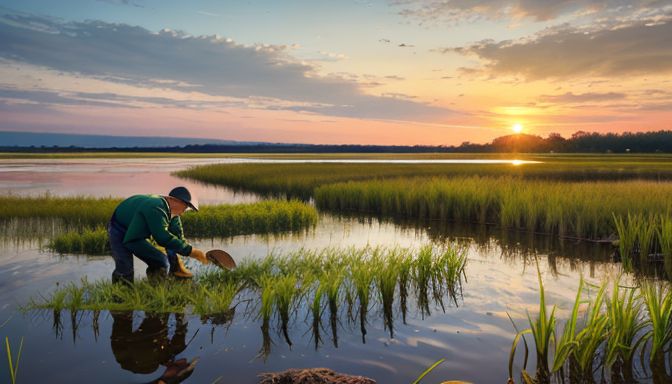
Enjoying the Fruits of Your Labor
After all the hard work and dedication put into planting and cultivating wild rice, it’s time to reap the rewards and enjoy the fruits of your labor. Wild rice offers a unique and nutty flavor that can enhance a variety of dishes, from hearty soups to flavorful salads. Let’s delve into the many ways you can savor and appreciate this ancient grain:
- Culinary Delights: Incorporate cooked wild rice into your favorite recipes, such as casseroles, stir-fries, and pilafs, to add a nutritious and flavorful twist.
- Wild Rice Pilaf: Create a delicious wild rice pilaf by sautéing onions, garlic, and mushrooms before adding cooked wild rice and a sprinkle of fresh herbs.
- Wild Rice Salad: Mix cooked wild rice with colorful vegetables, dried fruits, and a zesty vinaigrette dressing for a refreshing and satisfying salad option.
Whether you enjoy wild rice as a side dish or as the star of the meal, its versatility and rich taste are sure to impress your taste buds. Embrace the culinary possibilities and savor every bite of this wholesome and ancient grain!
Frequently Asked Questions
- What is the best time to plant wild rice?
The best time to plant wild rice is in the spring, once the water temperature reaches around 60°F (15°C). This allows the seeds to germinate and establish well before the colder months.
- Do I need a lot of space to grow wild rice?
Wild rice can be grown in relatively small spaces, especially in containers or small paddies. However, it is essential to ensure proper water depth and quality for successful cultivation.
- How do I know when wild rice is ready to harvest?
Wild rice is typically ready for harvest when the grains have turned a deep shade of brown and the majority of the seeds have ripened. Additionally, the heads of the rice will start to droop slightly when mature.
- Can I eat wild rice straight from the plant?
No, wild rice needs to go through a processing stage before it is ready to eat. This involves drying, threshing, and potentially parching the grains to remove the outer husk and make it suitable for consumption.
- Unraveling the Mystery of Yellowing Snake Plants - May 16, 2024
- Troubleshooting Yellowing Citronella Plants - May 16, 2024
- Troubleshooting: Elephant Ear Plant Turning Yellow - May 16, 2024






